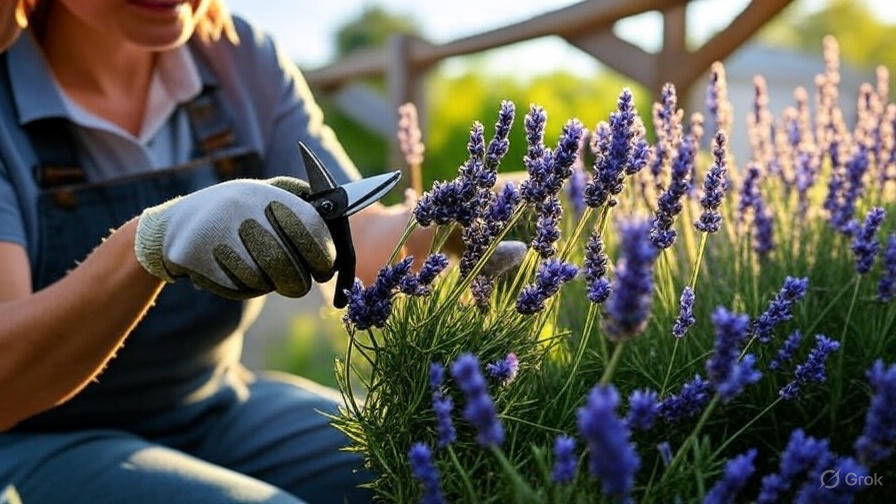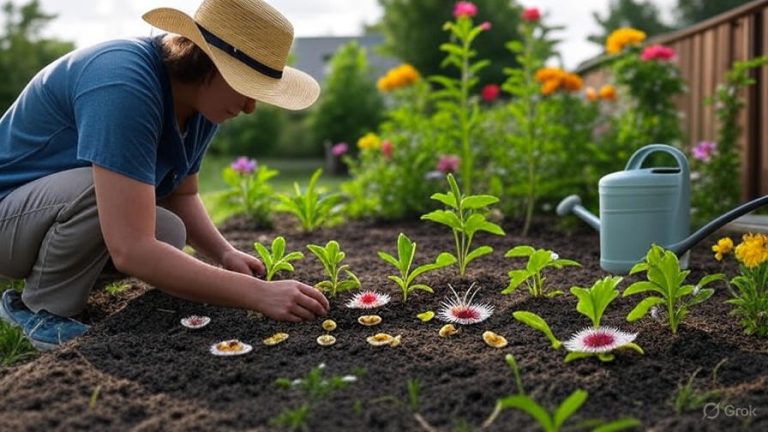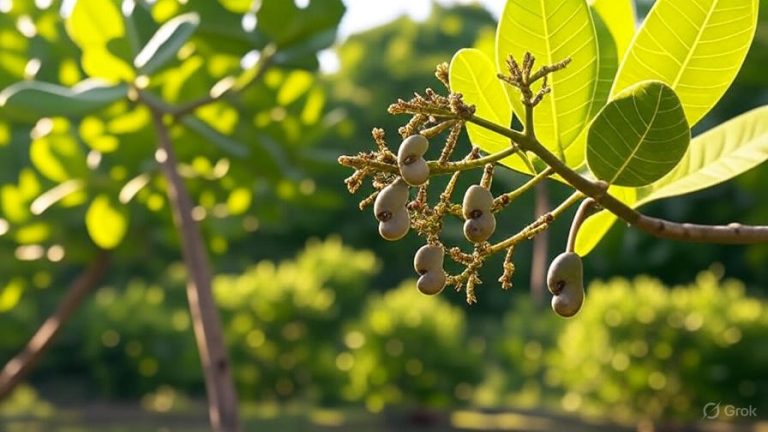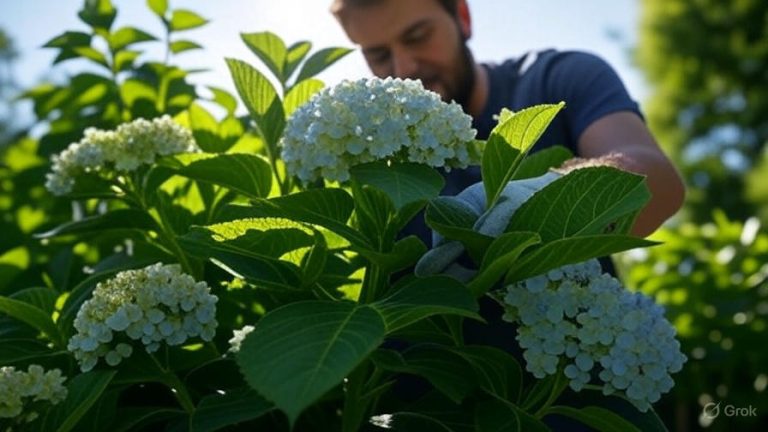How & When to Prune Lavender?
Lavender plants bring beauty, fragrance, and countless benefits to gardens worldwide. These Mediterranean herbs produce stunning purple flowers and aromatic foliage that gardeners treasure. However, many people struggle with proper lavender care, particularly when it comes to pruning. Without regular trimming, lavender plants become woody, produce fewer flowers, and lose their compact shape.
Proper pruning transforms straggly, overgrown lavender into healthy, bushy plants that bloom abundantly year after year. This comprehensive guide reveals exactly when and how to prune your lavender plants for maximum health, beauty, and fragrance.
Why Lavender Pruning Matters
Lavender plants naturally grow in rocky, Mediterranean climates where harsh conditions keep them compact. In garden settings, these plants often grow larger and more sprawling than their wild counterparts. Without intervention, lavender develops woody stems, produces fewer flowers, and becomes less fragrant over time.
Regular pruning encourages new growth from the base of the plant. This fresh growth produces the most aromatic oils and the brightest flowers. Pruned lavender plants also maintain their attractive, mounded shape instead of becoming leggy and sparse.
Neglected lavender plants often split open in the center, creating an unsightly bare patch. This happens because the woody stems cannot support the weight of the foliage. Proper pruning prevents this problem by keeping the plant structure strong and balanced.
The Best Time to Prune Lavender
Timing makes all the difference when pruning lavender. The ideal pruning window depends on your climate, lavender variety, and specific growing conditions.
Spring Pruning: The Primary Season
Spring serves as the main pruning season for most lavender varieties. Start pruning after the last frost date in your area but before new growth begins actively growing. This timing typically falls between late February and early April, depending on your location.
Spring pruning allows plants to recover quickly as temperatures warm and daylight hours increase. The plants have the entire growing season to develop new growth and prepare for winter. This timing also prevents you from accidentally removing flower buds that form on new growth.
Late Summer Pruning: Light Maintenance
Late summer offers another opportunity for lighter pruning. After the main flowering period ends, you can trim spent flower stalks and lightly shape the plant. This maintenance pruning typically occurs in late August or early September.
Late summer pruning should remain minimal – focus on removing dead flowers and making minor shape adjustments. Heavy pruning during this time can stimulate new growth that won’t have time to harden off before winter.
Fall Pruning: Avoid This Timing
Never prune lavender heavily in fall or early winter. Late pruning stimulates tender new growth that cannot survive freezing temperatures. This timing often leads to plant death or significant damage during winter months.
Light deadheading of spent flowers is acceptable in fall, but save major pruning for spring. This approach gives plants the best chance of surviving winter and thriving the following year.
Essential Tools for Pruning Lavender
Sharp, clean tools make pruning easier and healthier for your plants. Dull tools crush stems instead of making clean cuts, which can introduce disease and slow healing.
Hand Pruners
Quality bypass pruners work best for most lavender pruning tasks. These tools make clean cuts on stems up to about half an inch thick. Look for pruners with sharp, high-carbon steel blades that hold their edge well.
Clean your pruners with rubbing alcohol between plants to prevent disease transmission. Sharp tools require less pressure, reducing hand fatigue during longer pruning sessions.
Hedge Shears
Large lavender plants or multiple plants benefit from hedge shears for initial shaping. These tools allow you to quickly remove the top portion of the plant before making detailed cuts with hand pruners.
Use hedge shears only for the rough cutting phase. Switch to hand pruners for precise cuts and detailed shaping work.
Loppers
Mature lavender plants sometimes develop thick, woody stems that require loppers. These long-handled tools provide the leverage needed to cut through tough growth without damaging the plant.
Use loppers sparingly and only on the thickest stems. Most lavender pruning should be possible with hand pruners alone.
Step-by-Step Pruning Technique
Proper technique ensures healthy regrowth and maintains the plant’s natural beauty. Follow these steps for best results:
Step 1: Assess the Plant
Start by examining your lavender plant carefully. Look for dead, damaged, or diseased stems that need complete removal. Note the overall shape and identify areas that need more or less pruning.
Healthy lavender stems show green growth and flexible wood. Dead or dying stems appear brown, brittle, or completely dry. These stems must be removed entirely.
Step 2: Remove Dead and Damaged Growth
Begin by cutting out all dead, damaged, or diseased stems. Cut these stems back to healthy wood or remove them completely if necessary. This cleaning improves air circulation and prevents disease spread.
Make cuts just above healthy growth nodes or lateral branches. Avoid leaving stubs, which can become entry points for disease organisms.
Step 3: Shape the Plant
After removing problem growth, focus on shaping the overall plant. Lavender looks best when maintained in a neat, rounded mound. Cut the plant back by about one-third of its height, maintaining the natural dome shape.
Avoid cutting into old, woody stems unless absolutely necessary. These stems rarely produce new growth and may not recover from heavy pruning.
Step 4: Thin Dense Growth
Open up the center of the plant by removing some interior stems. This improves air circulation and light penetration, leading to healthier growth and better flower production.
Remove about 20% of the interior stems, focusing on the weakest or most crowded growth. This selective thinning maintains the plant’s fullness while improving its health.
Step 5: Final Shaping
Make final adjustments to create a smooth, even outline. Step back frequently to check your progress and ensure balanced shaping. The goal is a natural-looking dome with no obvious flat spots or irregular areas.

Pruning Different Lavender Varieties
Different lavender species require slightly different pruning approaches. Understanding these differences helps you provide the best care for your specific plants.
English Lavender (Lavandula angustifolia)
English lavender tolerates the heaviest pruning among common varieties. You can safely cut these plants back by one-third to one-half their height each spring. This aggressive pruning keeps plants compact and promotes abundant flowering.
English lavender also handles light pruning throughout the growing season. Remove spent flower stalks regularly to encourage continued blooming and maintain plant appearance.
French Lavender (Lavandula stoechas)
French lavender requires more careful pruning than English varieties. These plants have a more delicate structure and don’t recover as well from heavy cutting. Limit pruning to about one-quarter of the plant’s height each year.
Focus on removing spent flowers and lightly shaping the plant. Avoid cutting into woody stems unless absolutely necessary for plant health.
Spanish Lavender (Lavandula latifolia)
Spanish lavender falls between English and French varieties in terms of pruning tolerance. You can safely remove up to one-third of the plant’s height each spring. This variety benefits from regular deadheading during the growing season.
Spanish lavender tends to grow larger than other varieties, so consistent annual pruning becomes especially important for maintaining manageable size.
Hybrid Lavenders (Lavandula x intermedia)
Hybrid lavenders, including popular varieties like ‘Grosso’ and ‘Provence’, handle moderate pruning well. Cut these plants back by about one-third each spring, focusing on maintaining their natural shape.
These vigorous growers benefit from regular maintenance pruning throughout the season. Remove spent flower stalks and lightly trim wayward growth as needed.
Common Pruning Mistakes to Avoid
Even experienced gardeners sometimes make pruning errors that harm their lavender plants. Avoiding these common mistakes ensures better results and healthier plants.
Cutting Into Old Wood
The most serious mistake involves cutting too far back into old, woody stems. Lavender rarely produces new growth from bare wood, so aggressive pruning can permanently damage or kill plants.
Always leave some green growth on each stem when pruning. This green tissue contains the buds needed for new growth and recovery.
Pruning at the Wrong Time
Timing errors can stress plants or prevent proper flowering. Heavy fall pruning ranks as one of the most damaging mistakes, often leading to winter kill in cold climates.
Stick to spring pruning for major work and light summer maintenance for best results.
Neglecting Regular Maintenance
Skipping pruning for several years creates problems that become increasingly difficult to correct. Overgrown lavender plants develop thick, woody stems that resist rejuvenation pruning.
Annual pruning prevents these problems and keeps plants healthy and attractive throughout their lifespan.
Over-Pruning Young Plants
Young lavender plants need time to establish strong root systems and sturdy stems. Heavy pruning during the first year can stress these plants and slow their development.
Limit first-year pruning to light shaping and spent flower removal. Wait until the second year for more substantial pruning.
Post-Pruning Care
Proper aftercare helps pruned lavender plants recover quickly and develop strong new growth. These steps ensure the best possible results from your pruning efforts.
Watering Considerations
Newly pruned lavender plants have reduced foliage and lower water needs. Reduce watering frequency immediately after pruning to prevent root rot and other moisture-related problems.
Resume normal watering as new growth develops and the plant’s water needs increase. Well-established lavender plants typically need minimal supplemental watering once new growth matures.
Fertilizing After Pruning
Lavender plants rarely need fertilizer, but a light application after pruning can encourage healthy new growth. Use a balanced, low-nitrogen fertilizer to avoid excessive vegetative growth at the expense of flowers.
Organic compost or well-aged manure provides gentle nutrition without overstimulating growth. Apply these materials sparingly around the base of the plant.
Mulching and Protection
Light mulching helps retain soil moisture and suppress weeds around newly pruned plants. Use organic mulches like bark chips or straw, keeping mulch away from the plant’s base to prevent moisture buildup.
In cold climates, consider protecting pruned plants from harsh winter winds. Burlap screens or evergreen boughs provide effective protection without trapping moisture.
Seasonal Lavender Care Schedule
A consistent care schedule ensures your lavender plants receive attention at the right times throughout the year. This routine maintenance keeps plants healthy and productive.
Spring Tasks
Spring marks the beginning of the active growing season and the primary pruning period. Complete major pruning before new growth begins, then focus on supporting plant recovery and development.
Apply organic mulch and provide light fertilization if needed. Begin regular watering as temperatures warm and growth accelerates.
Summer Maintenance
Summer care focuses on maintaining plant health and appearance during the peak growing season. Regular deadheading encourages continued flowering and prevents seed formation.
Monitor plants for pest problems and diseases. Lavender’s natural oils repel most insects, but occasional issues may require attention.
Fall Preparation
Fall tasks prepare plants for winter dormancy and next year’s growth. Complete any light maintenance pruning early in the season, then focus on helping plants prepare for cold weather.
Reduce watering as temperatures cool and growth slows. Clean up fallen leaves and debris that might harbor pests or diseases over winter.
Winter Protection
Winter care varies significantly based on climate and lavender variety. In cold regions, provide protection from harsh winds and extreme temperature fluctuations.
Avoid heavy mulching that might trap moisture and cause crown rot. Light protection that allows air circulation works best for most varieties.
Troubleshooting Pruning Problems
Even careful pruning sometimes leads to unexpected problems. Recognizing and addressing these issues quickly helps minimize damage and restore plant health.
Slow Recovery After Pruning
Some plants recover slowly from pruning, showing little new growth for several weeks. This delay often indicates stress from over-pruning or poor timing.
Provide consistent but not excessive moisture and avoid fertilizing stressed plants. Most lavender plants eventually recover with proper care and patience.
Uneven Growth Patterns
Irregular new growth can result from uneven pruning or underlying plant health issues. Address this problem by making corrective cuts during the next pruning session.
Ensure adequate light reaches all parts of the plant. Dense growth or nearby obstacles can create uneven development patterns.
Disease Issues After Pruning
Pruning wounds sometimes become infected with fungal diseases, especially in humid conditions. Prevent problems by using clean, sharp tools and avoiding pruning during wet weather.
Improve air circulation around affected plants and remove infected tissue promptly. Avoid overhead watering that keeps foliage wet for extended periods.
Long-Term Lavender Management
Successful lavender growing requires a long-term perspective and consistent care practices. Understanding how pruning fits into overall plant management helps ensure lasting success.
Plant Lifespan and Replacement
Most lavender plants remain productive for 8-12 years with proper care. However, even well-maintained plants eventually become too woody and lose vigor.
Plan for plant replacement by starting new plants from cuttings or purchasing young specimens. This approach ensures continuous lavender production in your garden.
Propagation from Pruned Material
Pruning provides excellent material for propagating new lavender plants. Soft tip cuttings from pruned stems root readily and develop into vigorous new plants.
Take cuttings from healthy, non-flowering shoots about 4-6 inches long. Remove lower leaves and dip in rooting hormone before planting in well-draining potting mix.
Landscape Integration
Consider how pruning affects your lavender’s role in the overall landscape design. Consistent pruning maintains the plant’s contribution to garden structure and seasonal interest.
Coordinate pruning timing with other garden maintenance tasks for efficiency. Many gardeners find spring garden cleanup an ideal time for lavender pruning.
Conclusion
Proper lavender pruning transforms ordinary plants into spectacular garden features that provide years of beauty and fragrance. The key lies in understanding when and how to prune different varieties while avoiding common mistakes that can damage or kill plants.
Spring pruning remains the most important task, allowing plants to recover during the active growing season. Use sharp, clean tools and focus on maintaining the plant’s natural dome shape while removing dead or damaged growth.
Remember that different lavender varieties have different pruning needs, with English lavender tolerating the heaviest pruning and French lavender requiring a lighter touch. Consistent annual maintenance prevents problems and keeps plants healthy throughout their lifespan.
With proper pruning techniques and timing, your lavender plants will reward you with abundant flowers, intense fragrance, and attractive foliage for many years to come. The effort invested in learning correct pruning methods pays dividends in plant health, beauty, and garden satisfaction.







